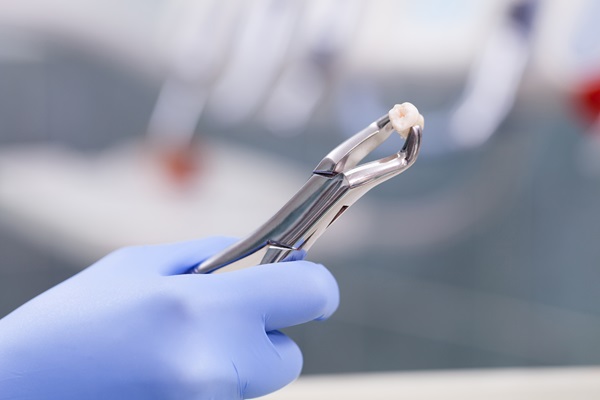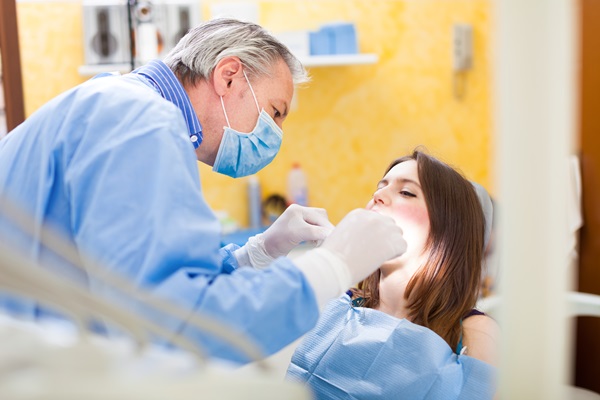Bone GraftingBrighton, CO
For many patients, bone grafting is the solution they need to repair or rebuild their teeth. Several factors can cause a person to have an insufficient amount of natural bones in the mouth. Bone grafting is a surgical procedure that works by transplanting bone tissue.
Bone grafting is available at Platte Valley Oral Surgery in Brighton and the surrounding area. This treatment may help recreate bone and missing supporting tissue. Call us today at 303-997-0223 to make an appointment.
Understanding Bone Grafting
Missing teeth are more than just a matter of aesthetic concern. Over time, they may cause the associated jawbone to atrophy, or resorb. As a result, the remaining bone may be of insufficient quality and quantity to place dental implants. Additionally, bone loss may cause the facial appearance to sag, along with difficulty speaking and communicating. Bone loss can also negatively impact the patient's ability to chew, expand the patient's sinuses, and complicate any other dental treatments the patient may need in the future.
There are several potential causes for jawbone deterioration and loss, including periodontal disease, facial trauma, malocclusion, oral pathology, congenital disabilities, and sinus deficiencies. For many patients, bone grafting is a viable option to replace missing bones and promote new bone growth. The surgery consists of the surgeon making an incision over the bone defect. The bone graft will then be shaped and inserted into and around the area, then held in place with pins, plates, or screws.
Bone Grafting
Socket Preservation
Reasons for Bone Grafting
Some bone grafting procedures are more involved than others. Typically, any grafting done in preparation for dental implants or to fill an empty bone socket can be considered minor. Bone grafting to correct any jaw irregularities, however, may be considered major. Dr. Stearns can perform bone grafting to assist with nerve repositioning, ridge augmentation, sinus lift surgery, and socket preservation.
Nerve Repositioning
At times, dental implant placement may require repositioning of the inferior alveolar nerve. During a nerve repositioning procedure, the surgeon will typically expose the nerve and vessel canal by removing an outer section of the cheek on the side of the lower jaw bone.
The nerve and vessel bundle in that area is then isolated and pulled out slightly to the side, and the surgeon will place the implants. Bone graft material then refills the incision site before being closed.
Ridge Augmentation
Bone grafting can also help restore the alveolar ridge bone to its original state. Commonly performed after a tooth extraction, a ridge augmentation aims to recreate the natural contour of the gums and jaw. Usually, these contours are lost due to bone loss from a prior tooth extraction.
After tooth extraction, there is an empty socket in the alveolar ridge bone. This socket will usually heal on its own. However, it sometimes breaks and deteriorates.
Sinus Lift
Additionally, bone grafting can help raise the sinus floor and allow for new bone formation. Sinus lift surgery, also known as sinus augmentation surgery, may be necessary if the sinus wall is too thin to place dental implants in the bone. Bone loss in this area occurs due to injury or periodontal disease.
Socket Preservation
Finally, after tooth extraction, the bone (or socket) that once held the tooth in place may become damaged by disease or infection. Eventually, this may result in a deformity of the jaw. Jaw irregularities can be incredibly obstructive when it comes to performing restorative dentistry treatments. Socket preservation can help prevent them.
In this procedure, the socket is filled immediately with bone or bone substitute after extraction. Afterward, the surgeon will cover it with gum, artificial membrane, or tissue to aid in the healing process.
Types of Bone Grafting
Bone grafts can use bone from the patient or a donor. Each type of bone grafting has its own sets of risks and benefits. The most common types include autogenous bone grafts, allogenic bone grafts, and xenogenic bone grafts.
Also known as autografts, autogenous bone grafts take bone from somewhere else in the patient's body. Typically, the surgeon harvests the bone from the patient's chin, jaw, hip, lower leg bone, or skull. They can also produce new bone on their own.Allogenic bone grafts are also known as allografts.
In allografts, the surgeon will harvest dead bone from a cadaver and process it through a freeze-dry method.Xenogenic bone grafts use bones from other species, usually cows. The samples are subjected to very high temperatures to avoid potential rejection and contamination.
Allografts and xenogenic bone grafts cannot produce new bone on their own, meaning that bone regeneration after these procedures may take longer than with autografts. However, unlike autografts, they do not require a separate procedure to harvest bone.
Learn More Today
Dealing with deteriorating teeth can be stressful. Fortunately, bone grafting is a viable option for many patients. Our team at Platte Valley Oral Surgery may be able to help. Call us today at 303-997-0223 to schedule an appointment.
Frequently Asked Questions
Are there any substitutes for bone grafts?
Many synthetic materials are available as bone graft substitutes. These alternatives include demineralized bone matrix (DBM), demineralized freeze-dried bone allograft (DFDBA), graft composites, and bone morphogenetic proteins. Consult with Dr. Stearns to determine which bone graft is right for you.
Will bone grafting lengthen my treatment plan?
Bone grafting is a separate surgical procedure that usually happens in conjunction with one or more forms of treatment. Thus, it is possible that bone grafting will extend your treatment time by several months. However, this is dependent on several different factors. Additionally, bone grafting is often necessary for adequate treatment.
How do I prepare for bone grafting?
Our team will provide you with any specific instructions you need to prepare for your procedure. In general, however, you should expect for Dr. Stearns to perform a complete medical history and physical examination with you well in advance of the operation. You may also be required to fast before surgery to avoid any complications with anesthesia.
How long does it take to recover from bone grafting?
The recovery time for bone grafting can take anywhere from a few months to over a year. Another factor that can influence the recovery time is the type of procedure undergone. Speaking directly to your surgeon is the most effective way to know what to expect.
Do I really need bone grafting before getting dental implants?
Bone grafting is not always necessary. Generally, only those with jawbones that are either too thin or too soft will require bone grafting before getting dental implants.
Can my body reject bone grafting?
Bone graft rejection is rare, but it is possible. Our qualified team will work with you to make sure you are getting the safest possible experience. Dr. Stearns can go over any questions or concerns you may have during a consultation.





